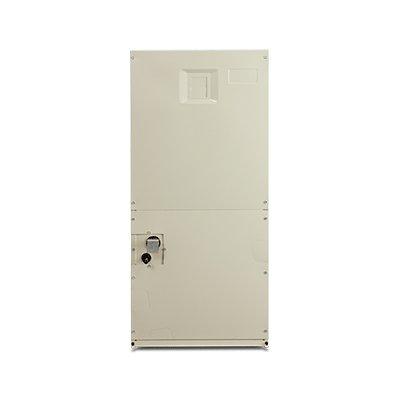Humidity in homes can’t be completely avoided. Cooking, showering, and doing laundry often release condensation into the air of the home. These are all normal causes of humidity and usually don’t require a dehumidifier.
Users will definitely need a dehumidifier if any of the following pertain to their home:
- Living in a high humidity region
- House is on or by the beach
- The home is older, with porous walls and floors
- Having poor ventilation in the home
All of these cause significant humidity in homes, which can be harmful to the health, to the house’s furnishings, and the overall condition of the house.
How to know if the Home is Too Humid?
Users should keep their home’s humidity under 60% in the summer and between 25% to 40% in the winter
The humidity levels in the home depend on the season. According to the EPA, users should keep their home’s humidity under 60% in the summer and between 25% to 40% in the winter. If their home’s humidity levels don’t fall within these parameters, then it’s either too humid or too dry. Both of these factors are damaging to homes and health.
Homeowner Tip: How To Measure Humidity
Here are tell-tale signs that your home is too humid:
- Warped wood
- Musty, moldy smells
- Damaged walls
- Water stains
- Constant condensation
On the other hand, users can purchase a hygrometer at the local home improvement store. These give accurate readings of humidity levels in a home to help determine whether users need a dehumidifier or not.
7 Benefits of Dehumidifiers
Dehumidifiers suck out the moisture from the air to maintain the air at optimal humidity. Less moisture in the air has a range of benefits and because of this, dehumidifiers can help to:
- Lessen or eliminate allergies
- Curb dust mite growth
- Prevent mold and mildew
- Keep furniture, art, and books in good condition
- Avoid electronic damage
- Improve air quality
- Get rid of musty odors
Overall, dehumidifiers promote good indoor air quality. This helps keep the home in good condition while providing clean, pure air.
How Air Conditioners and Dehumidifiers Work Together
A whole-house dehumidifier works by extracting excess moisture from the air flowing through the ducts
There are both portable and whole-house dehumidifiers. Whole-house dehumidifiers are installed directly into the home’s HVAC system to treat humidity problems at the source. This helps maintain optimal humidity levels across the home, not just in one localized area as a portable humidifier usually does.
A whole-house dehumidifier works by extracting excess moisture from the air flowing through the ducts. That way, by the time the air gets to different rooms, it has already been dehumidifier.
Factors to Consider When Shopping For a Dehumidifier
Just like each home is different, each home has its own dehumidifying needs. This is important to keep in mind as users shop for a dehumidifier. Consider the following things when buying a dehumidifier, that way users can find the perfect one for their home.
Capacity & Size
For larger homes, users will need a dehumidifier with a higher capacity if they do want to dehumidify the entire home. In this case, however, it is recommended to install a whole-house dehumidifier into the HVAC system.
For best results, choose a unit based on the square footage of the area that needs to dehumidify. This can help in selecting the right size and capacity.
Portability
Portable dehumidifiers are also great options for homes with uneven humidity levels
Portability is important to consider if users don’t own the home and would like to take the dehumidifier with them when they move. Portable dehumidifiers are also great options for homes with uneven humidity levels. Users can put a portable dehumidifier in the spaces that need it most, like bathrooms and laundry rooms.
Energy Efficiency
Perhaps one of the most important things to consider when choosing a dehumidifier is energy efficiency. Energy-efficient dehumidifiers can help save money on energy bills, while still properly removing moisture from the air.
Timers
Last but not least, timers are a handy feature to have on a dehumidifier. Setting a timer can help save money by limiting the amount the dehumidifier is on, ensuring that it doesn’t keep running, and wasting energy when the air has already been dehumidifier.
Improve Indoor Air Quality With Air-Rite
Air-Rite is committed to helping keep the home healthy and comfortable. Using a dehumidifier is just the start. Good indoor air quality also depends on the filters users use, the AC maintenance plan, and more.




















